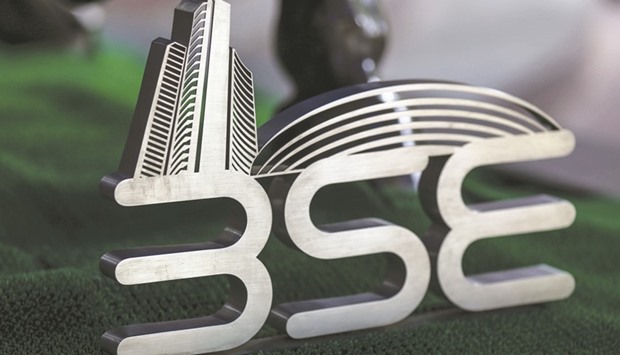Indian shares climbed, with Sensex posting its first weekly advance in five, as a recovery in the rupee from a record low and a rebound in Asian equities spurred traders to close bearish bets.
The BSE Sensex closed higher by 456.17 points, or 1.76%, to 26,316.34, while the Nifty 50 of NSE closed up 148.80 points, or 1.87%, to 8,114.30.
Software exporters and drug makers led gains in the benchmark S&P BSE Sensex, which reclaimed the 26,000 level after breaking below it on Thursday. The rupee rebounded 0.4% after it breached the record low set in 2013 on Thursday amid a 2.5% decline this month, far less dramatic than the 8.1 % plunge seen in August 2013. The MSCI Asia Pacific Excluding Japan Index also recovered from the previous day’s drop.
Indian equities have been battered this month amid mounting concern the government’s recall of Rs15tn of currency notes – or 86% of total bills in circulation – will hurt economic growth. The cash crunch may pull down gross domestic product in the year through March by 0.5 percentage points, Citigroup said in a report.
“Stocks and rupee are rebounding from oversold territory as the number of bearish bets have come down, which is helping sentiment,” Jitendra Panda, chief executive officer at Peerless Securities Ltd, said by phone from Kolkata. “Software and commodity stocks are the best place to hide now as these sectors are not impacted by demonetisation.”
Capital outflows from emerging markets after Donald Trump’s shock victory have added pressure on Indian equities. Global funds have withdrawn $1.9bn from local shares this month, the highest in Asia after Taiwan, data compiled by Bloomberg show. Domestic funds, in comparison, have bought $1.8bn of shares, the data show.
The Sensex is valued at 15.5 times projected 12-month projected earnings, near the cheapest level since May. That compares with the MSCI Emerging Markets Index’s multiple of 12.
Meanwhile the rupee yesterday closed stronger, the maximum gains in 2 months against the US dollar, supported by the suspected intervention of the Reserve Bank of India (RBI) in the currency market and positive cues from Asian peers.
The rupee closed at 68.47 a dollar, up 0.4%, its maximum gain since September 22, from its previous close of 68.57. The home currency opened at 68.73 against the US dollar and touched a high of 68.36. So far this year, it has fallen 3.4%.
“Some state-run banks were seen selling dollars after local currency plunged to record low on Thursday,” said a forex dealer, requesting anonymity.
The Indian currency sank to a record low against the dollar before staging a marginal recovery on Thursday as global funds sold Indian and other emerging market assets on rising expectations of a US interest rate increase next month. The rupee hit record low of 68.86 on Thursday and fell 2.5% so far in November.
Some analysts expect the local currency to hit a level between 70 and 72 per dollar in the near term in the belief that the Reserve Bank of India (RBI) would want to preserve its foreign exchange reserves.
“A rising yields in US and a stronger dollar overseas are bad things for emerging markets and Rupee is no exception. Foreign institutional investors are least interested to chase long bonds at these yields and they are not showing much enthusiasm on the equity front too. All in all, rupee is drifting lower, only countered by spirited intervention from the central bank, who is using ETC and OTC to sell USD”, said Kotak Securities in a report.
Bond yield erased losses after Bloomberg reported that India’s finance ministry is considering raising the limit for the Market Stablisation Scheme, which will help the central bank manage the extra liquidity in the system. The government is also considering limit on domestic gold holdings, the report added.
The benchmark 10-year government bond yield closed at 6.233% compared to Thursday’s close of 6.19%. Bond yields and prices move in opposite directions.

The Sensex closed up 456.17 points to 26,316.34 yesterday
